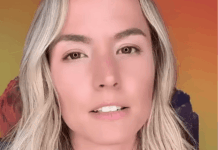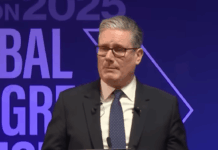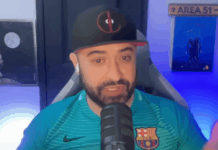If you already thought Big Pharma was evil, wait till you hear this story.
It turns out that a non-addictive opioid drug formula exists, but Purdue Pharma blocked anyone from making it.
Dr. David Martin explained to Jimmy Dore, “We had a declared emergency use authorization for anything we could do to actually deal with the opioid crisis. But the company [Purdue Pharma] that was making the drugs filed patents on the non-addictive formulas so that no one could produce them.”
Specifically, U.S. Patent 6,277,384 was filed by Connecticut residents Robert F. Kaiko and Robert D. Colucci, with assistance from the New York City law firm Davidson, Davidson & Kappel LLC.
It gets worse. From 2016 to 2018, Dr. Martin tried to break this story to CNBC, but they refused to publish it, deeming it “not newsworthy.”
Dr. Martin recounted his experience with CNBC: “I’m sitting up in New Jersey at the headquarters of CNBC, and I’m told that you can’t have these conversations because advertisers will not approve running these kinds of stories.”
“Never once has this story been ever publicized, despite two years of me recommending to the CNBC editorial board that we cover it,” Dr. Martin continued.
He lamented that this move by Purdue Pharma, ignored by the media, led to “hundreds of thousands of deaths across this country.”
Here is Dr. Martin’s 2018 op-ed that never got mainstream press:
Purdue Pharmaceuticals has been in the middle of a firestorm of controversy regarding its role in the epidemic of opioid abuse in the United States. As is often the case, once a case of death-inducing corporate profiteering rises high enough on the public radar, everyone from John Oliver to Stephen Colbert to headline grabbing U.S. Attorneys jump on the bandwagon decrying the evils of the Sackler family. And let’s face it: Mortimer Sackler and his off-spring knew that they were selling a drug that would lead to addictions. And recently, they have been awarded a 20 year monopoly on the treatment of the very addictions from which they profited.
In their December 22, 1997 patent filing (U.S. Patent 6,277,384 filed by Robert F. Kaiko and Robert D. Colucci – both of Connecticut – with the assistance of Davidson, Davidson & Kappel LLC based in New York City), they acknowledge the engineering of compounds that are engineered to optimize analgesic effects in human patients that are classifed as “physically dependent addicts“. Navigating through the thorny addiction minefield of all opioids, they stated that “preferably, the amount of naltrexone included in the oral doage form is less positively reinforcing (e.g., less “liked“) to a non-physically dependent opioid addict than a comparable oral dosage form without the antagonist included“. By 2001, knowledge of opioid abuse and dosage tampering led Purdue’s researchers (working for Euro-Celtique SA – a Luxembourg company) to invent “bittering agents“ to make drug abuse less palatable (U.S. Patent 7,141,250).
Several of Purdue’s early opioid patents were set to expire at the end of 2018. But courtesy of the United States Patent & Trademark Office and the United States Food & Drug Administration accommodations and complicity in protecting Purdue’s monopoly on death, subtle modifications to the formulation with no substantive new invention have extended the company’s proprietary position until the mid-2020s. Oxycontin®’s march of death will continue to enrich Purdue years after their addiction engineering plans should have expired.
Purdue’s recently granted patent holds an ominous calculus. In U.S. Patent 9,907,793, they confidently assert that the public trade-off between abuse and benefit justifies the use of the drugs. “Especially the physical dependence of patients suffering from pain to opioid analgesics leads to the development of tolerance, meaning that upon extended intake, increasingly higher doses of the pain relieving agent have to be taken by the patient, in order to experience pain relief. The euphoregenic effect of opioid analgesics often leads to the abuse of pain relievers. Drug abuse and psychological dependence are a common phenomenon, especially among teenagers. These dangerous effects are especially caused by the substances with strong analgesic capacity, and can range from undesired habituation to fully developed addiction. However, these substances are legitimately used for medical purposes and medicine cannot do without them.”(emphasis added)
And, a little trip down memory lane – if we can be lucid enough to take that journey – would suggest that the inevitability of opioid use and its associated addiction just comes with the territory. Since Portuguese sailors started mixing opium and tobacco in the 16th century leading to the economic rise (and fall) of a fair few empires to Frederich Sertuerner’s definition of opium’s active ingredient in 1803, countless mercantile forces have preyed on the addictive properties of opioids. Merck & Co began its commercial manufacturing of morphine in the 1820s and Britain’s Dr. Alexander Wood started shooting it up in 1843. At the turn of the most recent millennium, reportedly over 89 million prescriptions were written in the U.S. And, not surprisingly, Shire Pharmaceutical’s U.S. Patent 7,375,082 notes that “as prescription numbers rise, the number of emergency room visits and deaths from overdose increase correspondingly.” This was written in 2002! Get with the program Colbert and Oliver! The profiteering on this death has been around a lot longer than the satire that now seeks to profit on the evils of the profiteers!
For nearly two decades, medicine has seen over 500 patents issued to address minimizing or preventing opioid addiction and abuse. But as Dr. Lynn Webster published in Pain Medicine (Vol 10:Supp2, July 2009), “none of these formulations are currently commercially available.” Ironically, the publication of her paper was brought to you by…, you guessed it… a pharmaceutical company!
Let’s be clear. Purdue has published in its patent filings its knowledge of addiction and abuse risk for nearly two decades. With Massachusetts, New York, Tennessee, Oregon, Colorado, Texas, North Carolina, North Dakota and Florida joining the rush to prosecute Purdue Pharma, several parties may be worth considering as “co-conspirators”. The U.S. Patent & Trademark Office has approved patents that clearly set forth evidence of knowledge of drug abuse. The U.S. Food & Drug Administration (charged with safe-guarding the public) has supported monopolistic distribution of a harmful substance. What precisely makes their complicity less odious than that of a bishop covering up sex abuse in the church? Why is it that we’re allowing agencies of the U.S. government a pass for letting this epidemic get out of control when they’ve directly supported the very company responsible for selling a harmful substance?
Oh, maybe because we like to pretend that we disapprove of the death and carnage associated with drug abuse but our state health care programs, tax authorities, and “health care” companies are enriched by the suffering of millions.
We are not serious about the pain and suffering caused by opioids any more now than we were when we saw our modern political and economic systems hatched in opium dens. If any of the states or litigating parties want to get to the root of the problem, they’re ignoring the evidence that is publicly available from two U.S. government agencies that have been complicit in making the abuse possible.
From vigilantnews.com
Disclaimer: We at Prepare for Change (PFC) bring you information that is not offered by the mainstream news, and therefore may seem controversial. The opinions, views, statements, and/or information we present are not necessarily promoted, endorsed, espoused, or agreed to by Prepare for Change, its leadership Council, members, those who work with PFC, or those who read its content. However, they are hopefully provocative. Please use discernment! Use logical thinking, your own intuition and your own connection with Source, Spirit and Natural Laws to help you determine what is true and what is not. By sharing information and seeding dialogue, it is our goal to raise consciousness and awareness of higher truths to free us from enslavement of the matrix in this material realm.
 EN
EN FR
FR


























